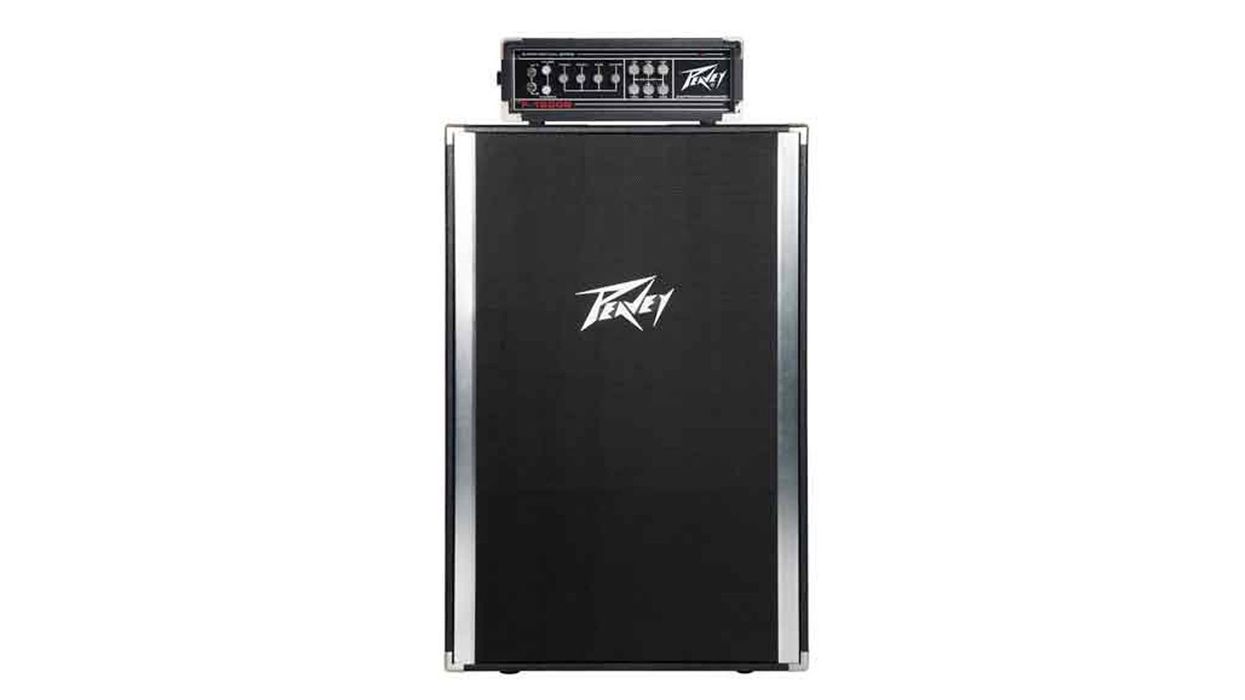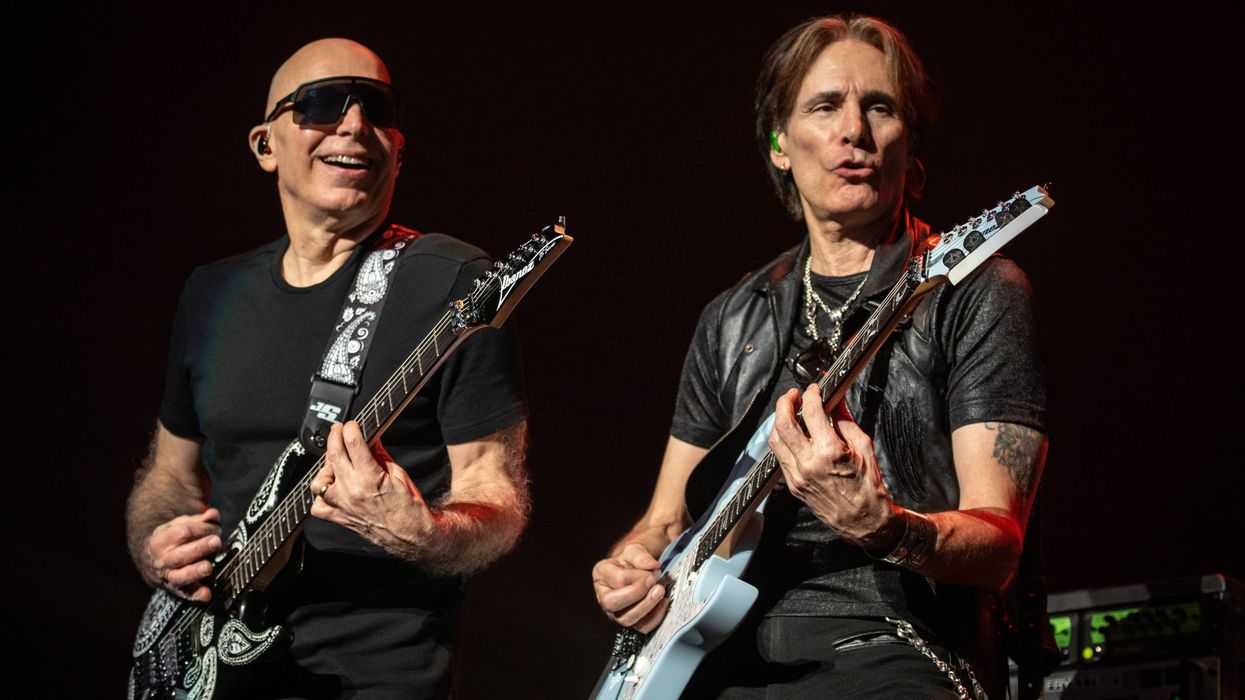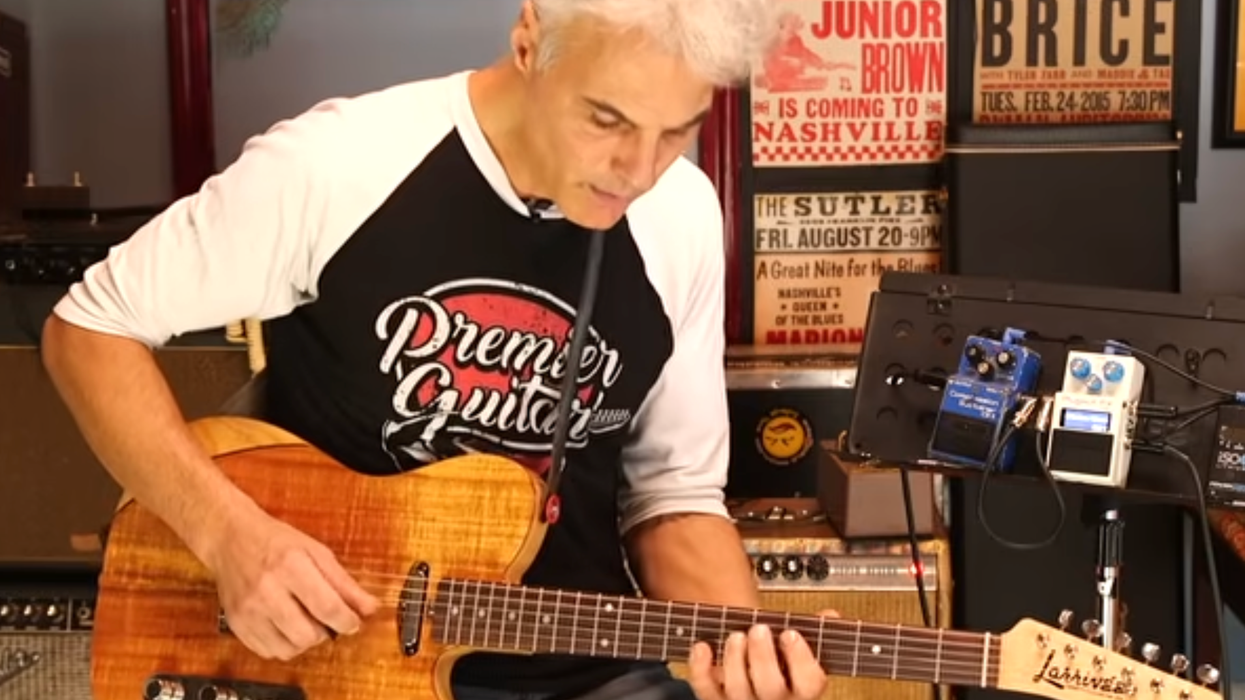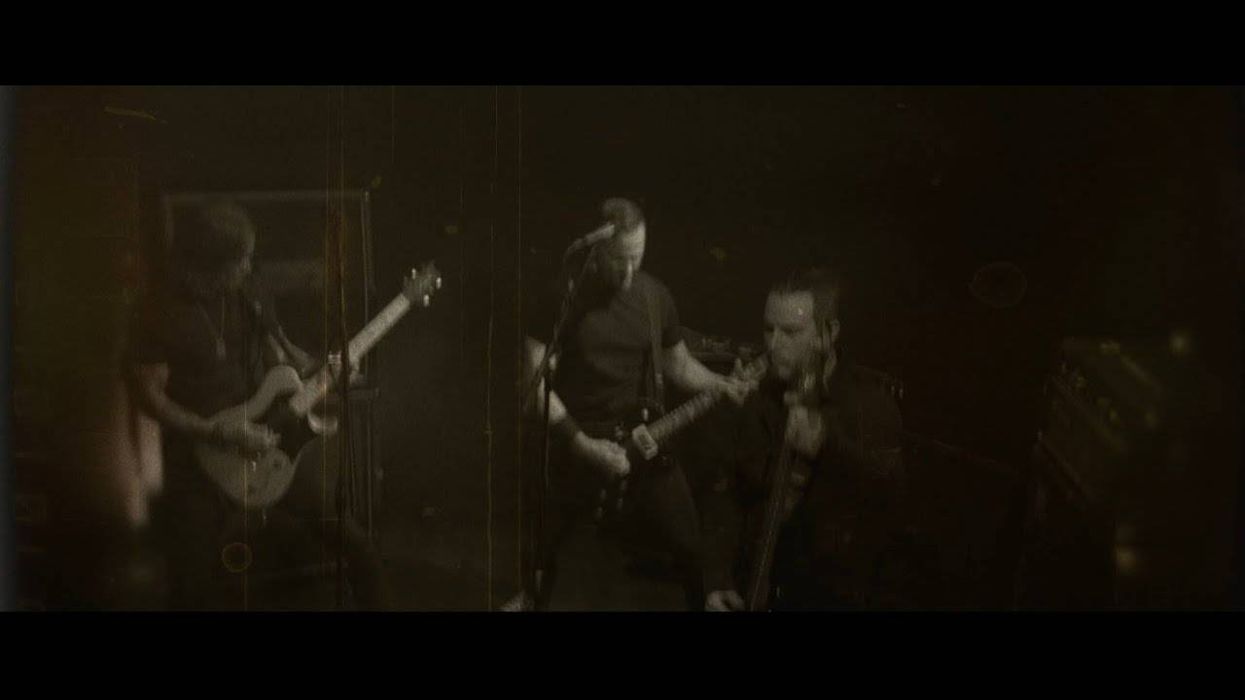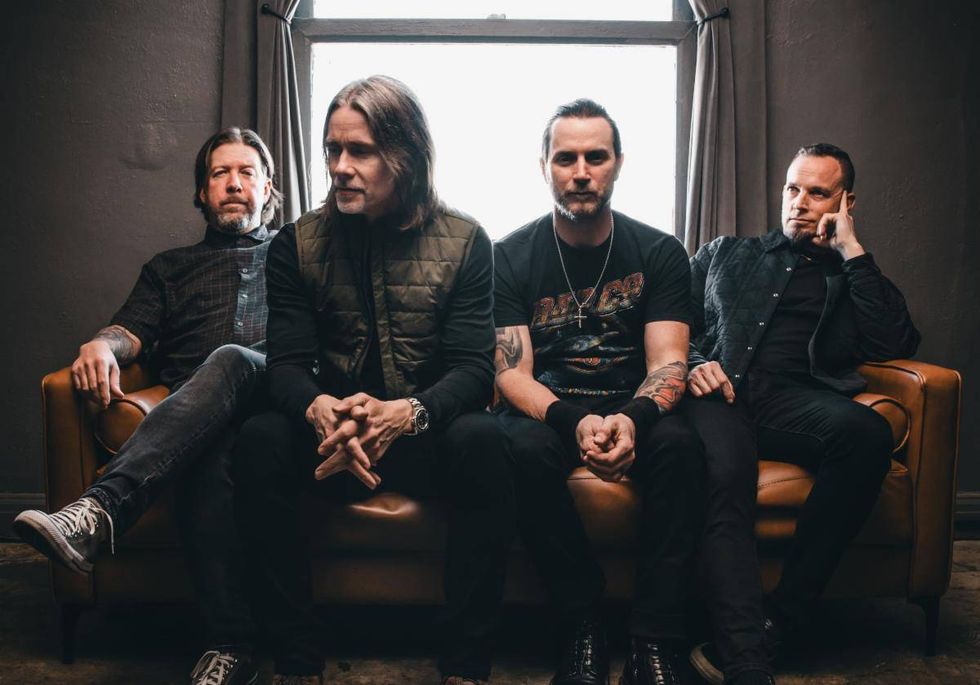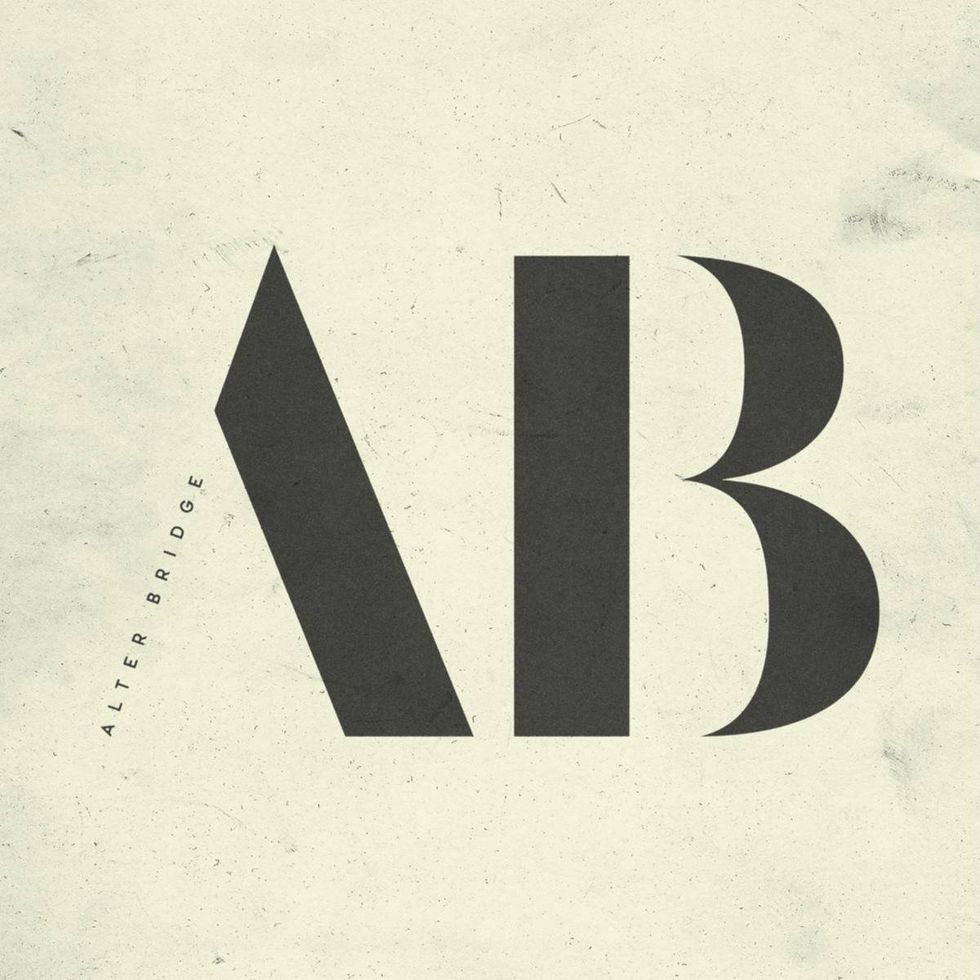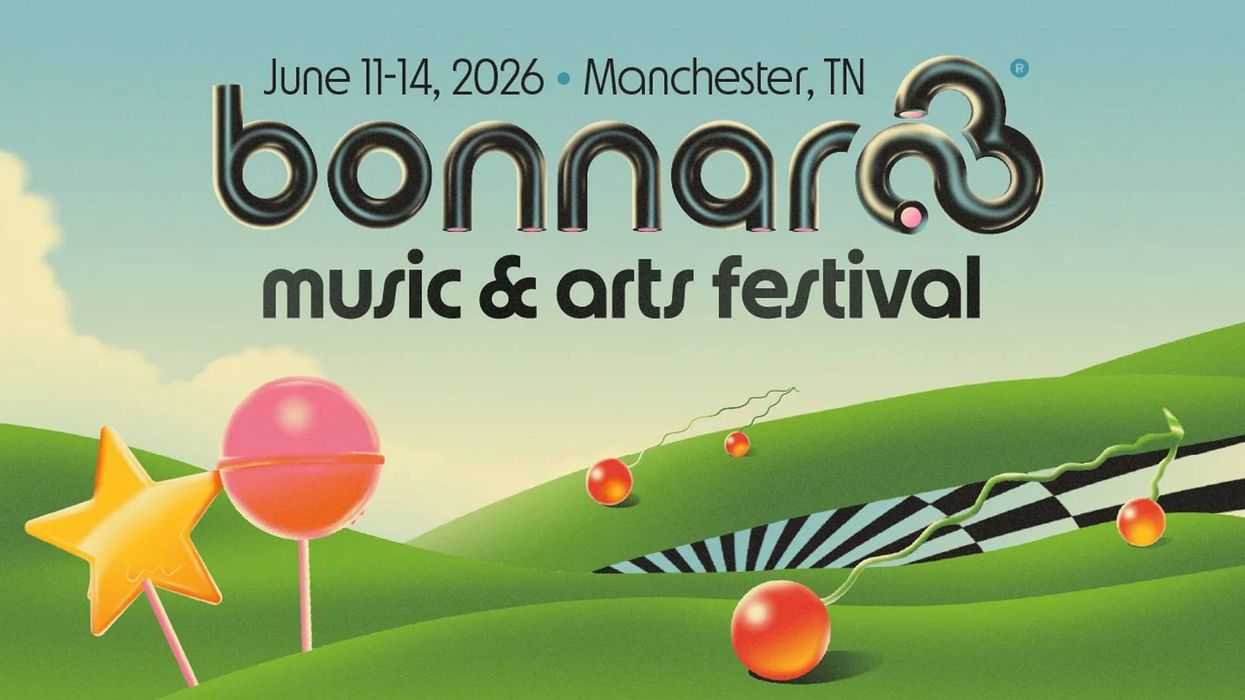We could argue all day long about the best multi-guitar band ever, but let’s face it, one band is at the top of the list whenever the phrase “dual guitar attack” is invoked: Thin Lizzy. Not to take anything away from Allman/Betts (The Allman Brothers), Downing/Tipton (Judas Priest), Murray/Smith (Iron Maiden), or Rossington/Collins (Lynyrd Skynyrd)— and the list goes on and on—but Thin Lizzy is synonymous with the concept. Several guitarists helped deliver the band’s one-two punch of searing and soaring lead lines with perfect harmony over the years, but none more than Scott Gorham. It was Gorham who helped fully develop and institutionalize the band’s gritty-but-melodic Les Paul x 2 sound along with Brian Robertson.
That sound was hook-friendly yet bold. It immediately inspired contemporaries and continues to entrance players today. Good luck getting “The Boys Are Back in Town” out of your head within days of hearing it again. And the tone… oh, that tone—with its razor sharp bite but warm, mid-heavy fullness, right in the sweet spot of tube breakup—you can nearly count the individual filament vibrations during the comping riffs in “Jailbreak.” It’s no wonder that everyone from Kirk Hammett to the Edge to Mastodon’s Bill Kelliher and Brent Hinds cites Scott Gorham as a major influence.
Gorham brought his American edge to the band while Robertson drew from British blues. Fused with lead singer/bassist Phil Lynott’s hypnotizing bass lines, everyman lyrics and distinctive vocals, the Dublin band had a groove and a sonic identity like none other. Gorham still tours with the band, sharing guitar duties with vocalist John Sykes. The band is also releasing a new live recording from 1977 that surfaced recently. It captures the band in Philadelphia, testing out songs from the Bad Reputation album, which had just been recorded.
We caught up with Gorham to talk about the NOS live release, how he got that famous tone back then and today (with different equipment) and his recollection of a guitar nightmare during his Thin Lizzy audition.
How did a guy originally from California, with a father in Iowa, land a gig with Thin Lizzy in the seventies?
 Scott rocking one of his custom Charlie Chandler Strats in Balingen, Germany during a 2003 festival gig. Photo by Frank White Photography |
I always had this dream of going over to England and seeing what it was like and experiencing its legacy. My brother-in-law, Bob Siebenberg, actually made the move first. He took the plunge to London and eventually landed himself a job with the group Supertramp as their drummer, who at this point hadn’t done a whole lot. I worked up enough money for a plane ticket and went over, only to find out Roger Hodgson, who was their guitarist/keyboard player, was going to play both. And that was kind of the end of that.
That was kind of a good thing; it gave me a kick in the ass. Here I was sitting in a foreign country, no money, didn’t know anybody, and it kind of forced me out of my little shell. It got me to go into different clubs or pubs, meeting different musicians—take this guy from this band and steal this guy and start my own band. And that’s what I did.
That band secured little pub gigs all around the London area. I would let a lot of musicians come on up and have a jam with us. One of the guys that used to come up all the time was an Irish guy named Ruan O’Lochlainn. One day he said, “I got this thing for you. There’s this Irish band called Thin Lizzy.” And I thought Jesus, Thin Lizzy? What a fucked up name. These guys are never going make it with a name like that. He says “Yeah, they’re looking for another guitar player. Do you want me to put your name forward?” I said “Yeah, what the hell.” I had 30 more days to go on my visa.
Was there an audition?
They had gone through like 25 different guitar players looking for the right guy. I guess they were recording the session, which I didn’t know. After the rehearsal, they went back and listened to the tape, and said, “Yeah man, that’s the guy.” Phil [Lynott] himself called me up that night and asked if I’d join the band.
Which UK bands and guitarists you were drawn to?
At that point, Ritchie Blackmore had a completely unique sound. The notes he was choosing … he had a really great, unique vibrato. It was the same with Paul Kossoff and Free. When you listen to his vibrato and tone, it’s like, Whoa. They’re just coming up with some killer stuff. Although Hendrix was American, he was deemed a British band. Here was this guy who was doing things with a guitar that nobody thought you could do. He used a lot of different pedals while a lot of the other guys just plugged straight into the amp and went. Steve Winwood with Traffic—and the list kind of goes on and on, but obviously I can’t forget the Beatles or Stones.
Let’s talk gear. How do you get your sound?
I don’t like to over-effect, but I do use some effects. What I’ve got now is an Engl E650 Ritchie Blackmore signature amp head that I run with two or four Marshall cabs. I also have a customized 100-watt Marshall JCM900SL-X amp that is used as an occasional backup, or a slave for my stereo mix. My pedalboard pretty much consists of T-Rex pedals, a Dunlop Crybaby wah, a Boss DD-3 delay, a TC Electronic Stereo Chorus Flanger, an Ibanez CS9 chorus, and a Robert Keeley two-knob compressor.
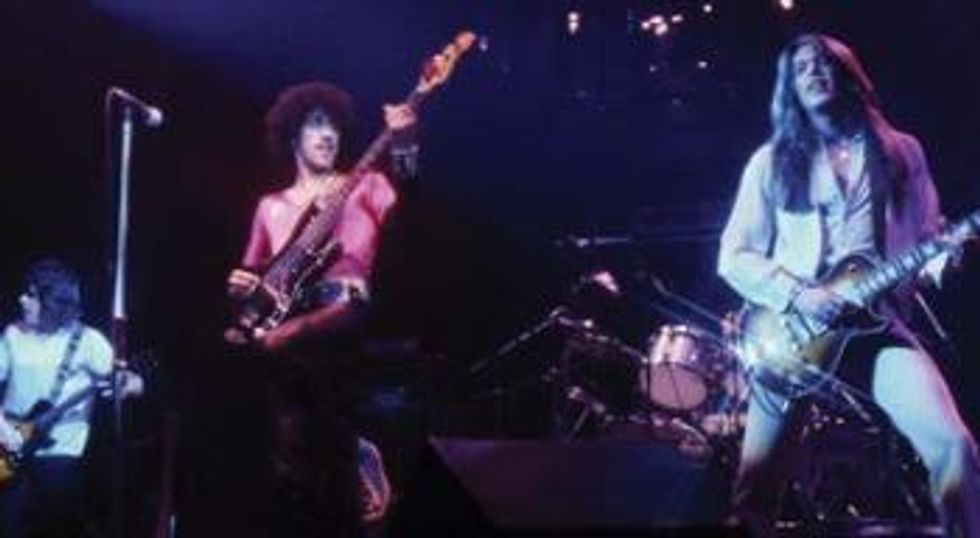 Gorham synchronized with bassist/lead singer Phil Lynott and guitarist Gary Moore at a show in London, UK on April 28, 1979. Photo by Laurens Van Houten-Frank White Photo Agency |
Back then, man, you couldn’t get stuff. We’re talking about caveman, Neanderthal-type stuff that was being made as one-offs in some guy’s basement. Back then, two pedals rarely sounded the same. I have to admit, though, there was one pedal I relied on the most in the seventies. That was the MXR flanger.
That seems to be a big one, especially the original models, because a lot of guys from all sorts of musical backgrounds swear by it.
Yeah, for sure, but now these days I don’t use it too much, probably because I used it so much back then. I just go in a different direction now. It’s like when I came over to England with no money, and all I could afford was fish and chips. I can’t even look at fish and chips without getting sick… same thing with flangers now.
When did you switch from Marshall heads to Engls?
I really do love the whole Marshall system. It’s big and solid, with a consistently great sound; the most road-worthy amp ever built. You can’t really improve on a classic like that, but it’s always good to switch things up. But that wasn’t the reason for my switch to Engl–that was more a do or die thing.
About two years ago on a UK tour I was using a stand-in guitar tech who managed to run the wrong voltage through both my Marshall amps just before our Wembley Arena show, blowing them all to hell. So with only a couple of hours before I had to play in front of 15,000 fans, my back was severely against the wall with nothing to play through. Luckily, an Engl representative was on tour with us and suggested that I try one of their amps. At that point I had never even heard of Engl and was very reluctant to go down that road, but the circumstances dictated otherwise so I had them throw one up for me to try, and from the first chord I was completely sold. Playing a new brand of amp in front of 15,000 people in your home town was quite an experience, but I loved the sound and have been using them ever since.
Have you consciously focused your attention on using more vibrato styles, or was it a natural evolution?
Well, it’s kind of something I’ve always had, but you do have to dial in and pay attention to those stylistic things as time goes on. A simple addition of vibrato, sustain, or a pull of the whammy bar can take an old song in a whole new, refreshing direction. It’s just about reinventing the song in new ways. There is nothing worse than listening to a guitarist playing a straight note, or that million-milean- hour vibrato—that goat kind of a vibrato. I always equate it to a singer or a saxophone player, and how they use their vibrato. You stretch the note up, you let it rest for a second and then you rip into it. You have to give that sound, tone, or note a feel or emotion— something that brings it alive and makes it tangible. Sometimes space and air make all the difference in an ordinary lick or a classic.
Thin Lizzy albums always bring to mind the doubled-guitar sound—whether through a flanger, a phaser, or just recorded in two parts—and that gritty, synchronized Les Paul attack. How did that come about?
[Laughs] There was no tried, trusted and fast way to come up with that kind of stuff. For us, it just came down to what sounded the best on that given day.
In regards to the guitar harmony, a lot of the times we would track it and then do it again to simply thicken up the guitars. For tracks like “Jailbreak” and “The Boys Are Back in Town,” I played the upper register and Brian would layer it with his own tracks, but on the lower registers. Sometimes we’d tune differently, switch guitars, or just use the same exact setup for both layers and guitar tracks. It was primarily for tonal proclivity, just to darken and thicken things up.
You guys had the obvious hits but there was more to it, too. Do you ever wish people dug more of the other stuff?
Going back to the whole “The Boys Are Back in Town” thing and being remembered for that, I can’t complain about that stuff. Like they say, “It’s better to have been loved once than not at all.”
But with this new album coming out now, Still Dangerous: Live at the Tower Theatre Philadelphia 1977—on that tour we were trying to prove that we weren’t just that song or the Jailbreak album. At that point, we didn’t have a lot of US touring under our belts, so that’s how a lot of people knew of us, but that was very limited. That tour was our shot to go out there to prove to all the Americans what Thin Lizzy was all about—”we’re going to go out there and kick your ass.” That was our attitude during that tour. We needed to prove to the Americans who we were as a band. Ironically, this was the only show of that tour we got to record, because we only got two weeks into it before Phil got sick with hepatitis C. However, we did get this one show and I think it captures our mission statement pretty well.
Regarding this live album, when you hear the songs played back, what do you notice now? Do you think the album captures what that tour was all about?
It’s cool to listen back to this show now because you can actually hear what we were doing. We had just finished Bad Reputation in Toronto–I don’t think we had even mixed that album yet–and we were offered an opening gig for this arena tour for two months. The idea was that we would go out and do two weeks of warm-up shows and then hit everyone right between the eyes with a solid, polished set for that following two month tour. The idea was to play these songs so we could see what the audience thought and judge their reaction … we could then toss [a song] out or jiggle it back farther in the set. It was cool for me to able to relive that thought process.
One guitar you’re often linked to is a Sunburst Deluxe. What’s the story behind that guitar?
On the first day I showed up for that initial meeting with the guys Phil introduced me to the rest of the band and told me to pull out my guitar so he could teach me a couple of the songs. I opened up this guitar case and out came this old, black Japanese Les Paul copy with no name on the headstock. I remember looking over at Brian Robertson and Brian Downey and they both rolled their eyes and were probably thinking, Holy crap, who is this guy? It was such a piece of shit. I think at one point during that first meeting the volume knob and a screw even fell off.
After I actually got the gig with Thin Lizzy, I remember going back for the first day of rehearsals and Phil said to me, “If you’re going to be in this band, we have to buy you a decent guitar.” I was all for that so we both went down to a place called Tottenham Court Road in London–it’s where all the guitar shops were at back then–but the problem was we had a real strict budget. Unbeknownst to me, Thin Lizzy at that point was heavily in debt, so to even get a new guitar at all was pretty amazing. Of course, I went straight to the expensive guitars and I could see Phil starting to sweat. He kept trying to draw my attention away from the top dollar guitars and so I finally grabbed this Sunburst Deluxe and plugged it in. It sounded pretty good and it had a great neck on it with a perfect shape to my hand, but most importantly, the price was right. And that’s how I landed that Deluxe you see me with in so much of the old footage. I played that guitar for the first three albums.
What about the other Les Paul?
We were touring in the US and a vintage guitar dealer came down to a show in Boston and flipped open about six boxes and I made a bee-line for this one guitar; he told me it was a ’59, but it was actually a ’57. I picked it up and it felt right. It sounded like a Thin Lizzy guitar. I asked our sound guy, Pete, what he was hearing and he just looked at me and said, “Buy it.” I looked down at the dealer and said, “Well, that just blew any negotiation on my part.” After a while, the wine red finish began to wear off and it appeared to have a Gold Top finish originally, so who knows what that guitar was.
Even in those days you weren’t a one guitar guy, but more recently you’ve been playing Strats. What was behind that switch?
Really, my Strats are Strat in body only. The guts of my Strats are all Gibson, so soundwise they still gel nicely. They are custom-built Charlie Chandler Strats which are a little easier to play, but more importantly, they are a lot lighter than the Les Pauls. With my custom Strats, I have been able to incorporate a Floyd Rose-type tremolo and a Gibson T-500 humbucker in the bridge, which suits my playing and Thin Lizzy songs a lot better. Another addition to those Strats is a Cornell mid-boost preamp.
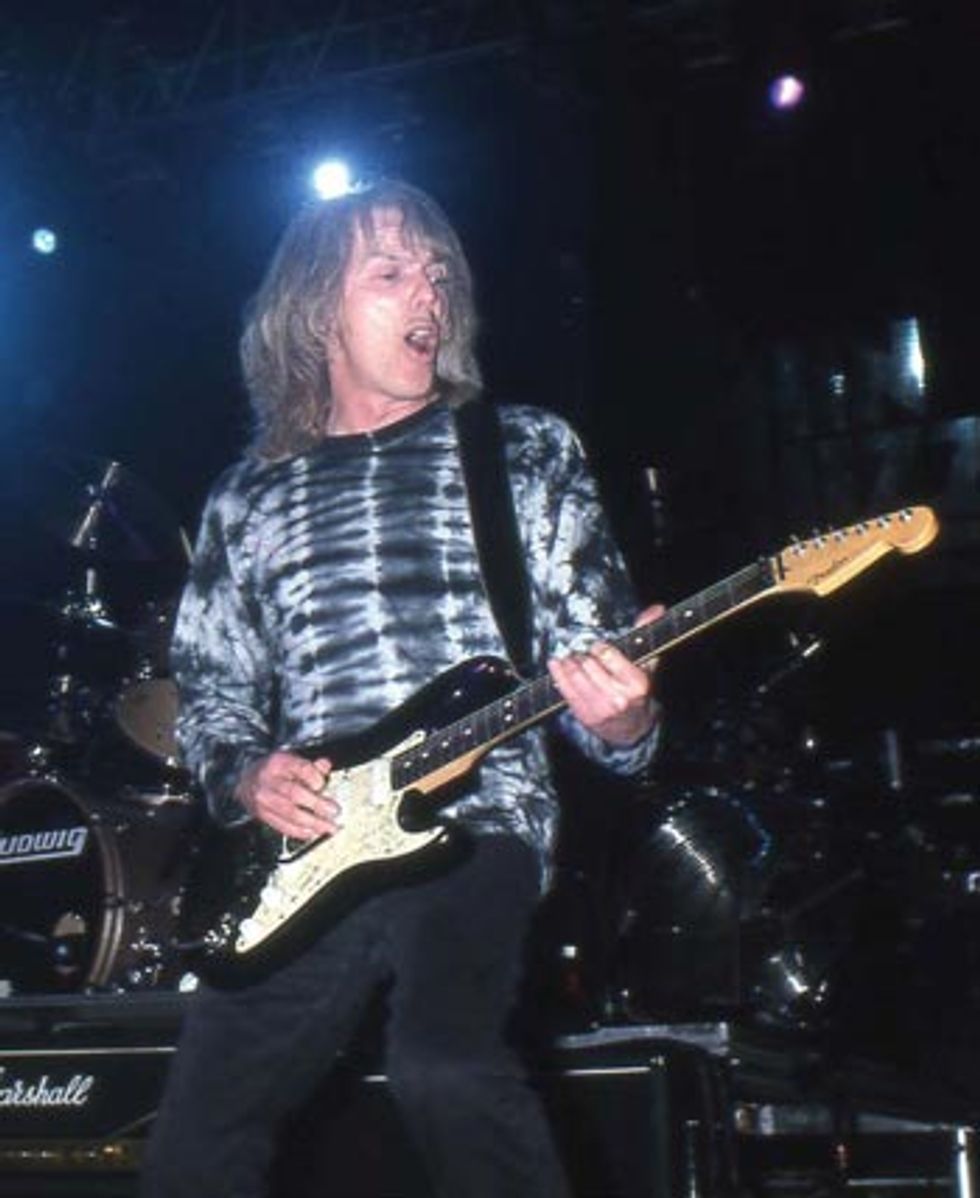 Gorham working the tremolo arm on his custom Charlie Chandler Strat while performing at New York City’s Beacon Theatre in March, 2004. Photo by Frank White |
Oh man [laughs]… you start wielding those babies around for two hours and your back is misaligned, your shoulder is destroyed and your neck is strained. It’s funny now because our other guitarist, John Sykes, still carries a big lump of mahogany wrapped around his neck all night and his shoulder is just killing him. But, he’ll never trade that guitar in for anything. That’s why I went to the Strat as my main guitar. I’ve been talking to Gibson and they’re building me a custom chambered guitar. So, I’ll be playing Pauls again.
During the ‘70s and early ‘80s, Thin Lizzy had, at one time or another, at least three other great guitarists—Brian Robertson, Gary Moore and Snowy White. What was it like for you to synch up with each person?
It doesn’t just happen, you know, making that tight, unified sound. No matter how close our styles were, we had to practice and rehearse out a lot of quirkiness like how far do we each bend the string or what each player’s vibrato is like. There are all sorts of timing issues! You always need to be aware of what the other guy is doing, his style, his tendencies when playing live and you’ve got to be able to let them be the star, too. You know, a band can’t have two lead guitarists in every song and in every solo; someone has to play rhythm.
What are your plans for 2009?
Well, I know we have a couple of Metallica shows this summer–Dublin and Knebworth–and most likely a few other festivals dotted around Europe. I know the management wants us to tour in the US and South America, so we’ve got people working on that. In the meantime, I’ve been finishing up the new album for my other band, 21 Guns, which should be ready for human consumption later this year.
SCOTT'S GEARBOX
| Guitars 1 ’69 Les Paul Sunburst Deluxe 1 ’59 Les Paul Darkburst (After years of gigs, the finish has worn off and revealed a Gold finish. Since then, it’s been thought to be a ’57 Gold Top) 3 ‘60s Les Paul Standards 2 Charlie Chandler custom Strats (both have Seymour Duncan single coils and a Gibson T-500 humbucker at the bridge, Cornell mid-boost preamps and Floyd Rose-type tremolos) | Amps and Cabinets Engl E650 Ritchie Blackmore signature amp 100 watt Marshall JCM900SL-X 2 Marshall 4x12 cabs 2 Engl 4x12 cabs Effects and Accessories Jim Dunlop Crybaby wah Robert Keeley two-knob Compressor Boss TU-2 tuner Boss DD-3 delay Voodoo Lab Pedal Power 2 Plus TC Electronic Stereo Chorus Flanger Ibanez CS9 Chorus. Ernie Ball Super Slinky .009s |
thinlizzyonline.com

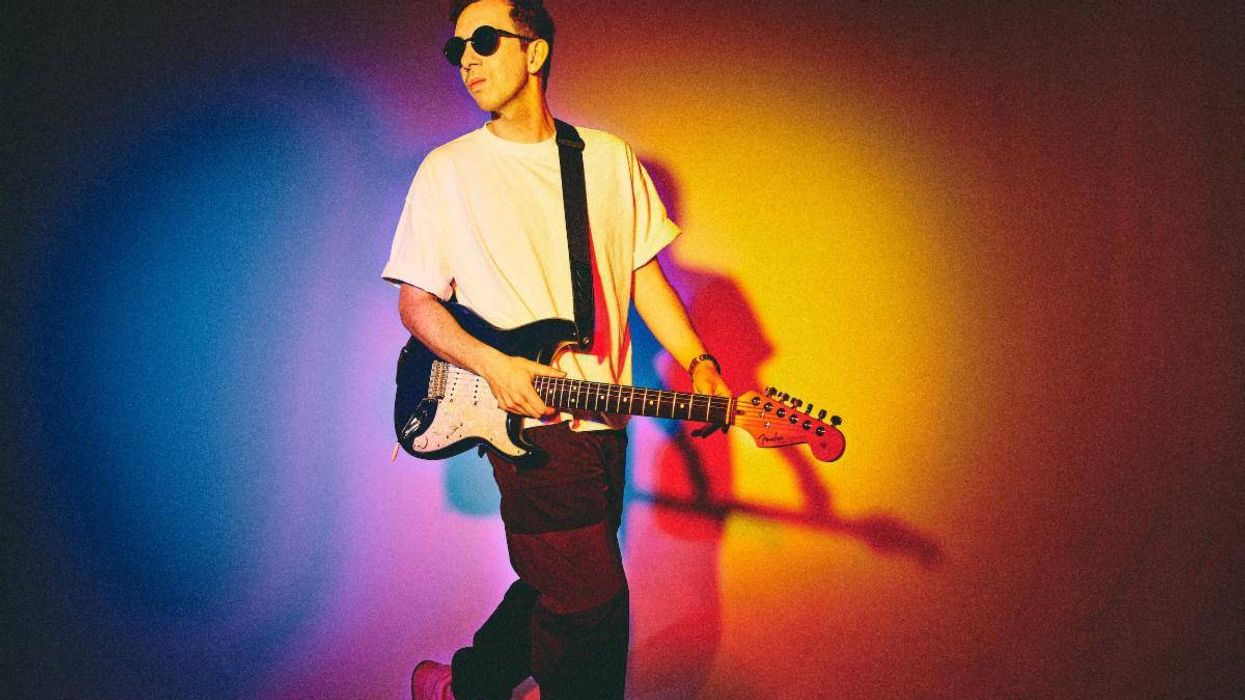
![Rig Rundown: Russian Circles’ Mike Sullivan [2025]](https://www.premierguitar.com/media-library/youtube.jpg?id=62303631&width=1245&height=700&quality=70&coordinates=0%2C0%2C0%2C0)





